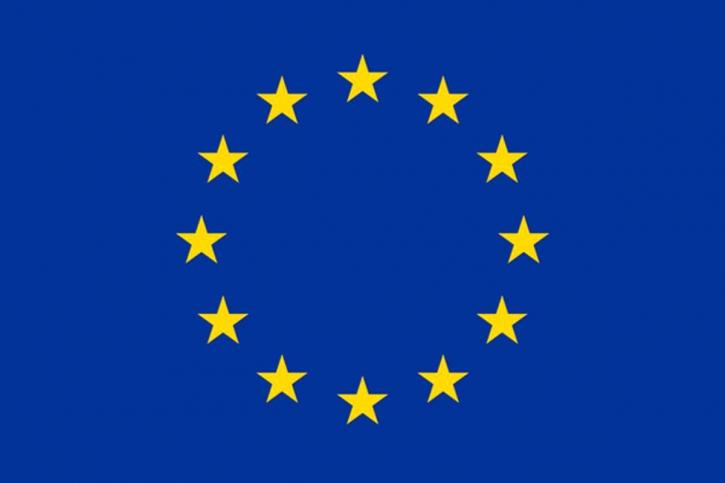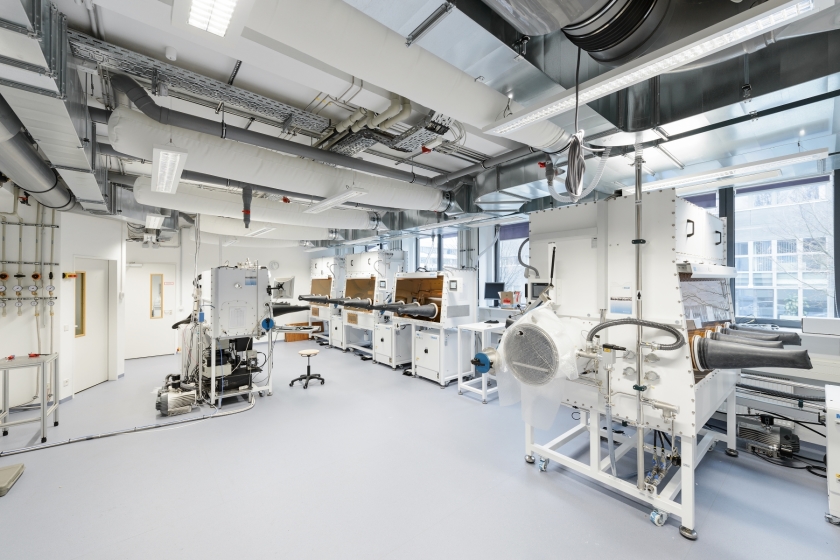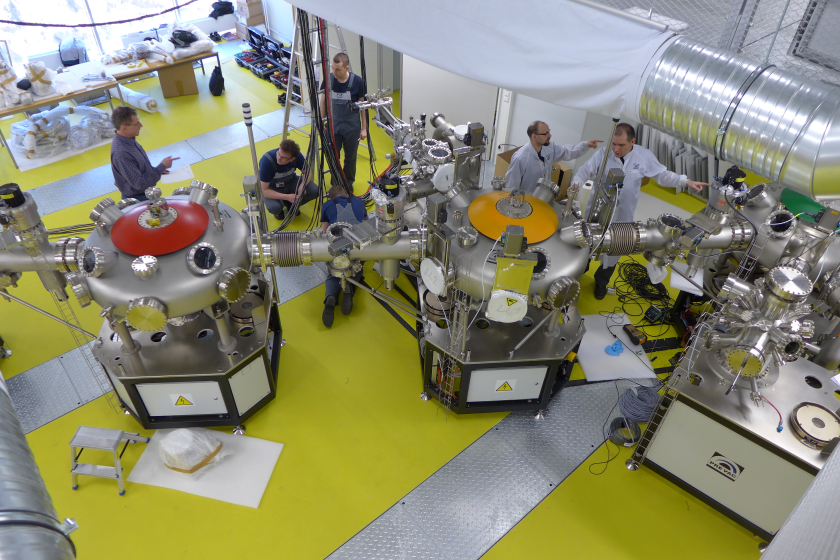VIPERLAB: EU project aims to boost perovskite solar industry in Europe

VIPERLAB is funded under the European Programme for Research and Innovation Horizon 2020 (Grant No 101006715).

HZB runs state-of-the-art laboratories (here HySPRINT) to advance research on perovskite solar cells. © P. Dera / HZB

Also the EMIL lab at HZB will host VIPERLAB projects. © S. Grunze/HZB
The HZB is coordinating a major European collaborative project to open up new opportunities for the European solar industry. The VIPERLAB project involves 15 renowned research institutions from Europe, as well as Switzerland and Great Britain. It will be funded within the framework of the EU's Horizon 2020 programme for the next three and a half years with a total of 5.5 million euros, from which the HZB will receive just under 840,000 euros.
Perovskite semiconductors enable extremely cheap and powerful solar cells. Many research results on this class of materials are obtained in European laboratories. For example, working groups at Helmholtz-Zentrum Berlin (HZB) have already achieved several world records with perovskite solar cells. Now the HZB is coordinating a major European collaborative project to open up new opportunities for the European solar industry.
VIPERLAB stands for „Fully connected virtual and physical perovskite photovoltaics Lab“. With VIPERLAB, the participating research institutions want to accelerate the development of perovskite PV technology in Europe and promote technology transfer to industry. To this end, they want to establish a close dialogue with the emerging perovskite industry in Europe, both with the help of new initiatives and with more established players such as the European solar industry association Solar Power Europe.
The participating institutions are among the best in European perovskite research. Within VIPERLAB, they will facilitate access to their laboratories and infrastructures so that research teams from public institutions or industry can work with the optimal equipment and methods. A database on materials and building elements will also be established, incorporating information on long-term performance and environmental and economic impacts. This database will enable evidence-based commercial and policy decisions.
Through close collaboration and tailor-made research services, VIPERLAB aims to give European industry a knowledge edge along the entire value chain.
VIPERLAB is funded under the European Programme for Research and Innovation Horizon 2020 (No 101006715).
arö
https://www.helmholtz-berlin.de/pubbin/news_seite?nid=22962;sprache=en
- Copy link
-
Battery research with the HZB X-ray microscope
New cathode materials are being developed to further increase the capacity of lithium batteries. Multilayer lithium-rich transition metal oxides (LRTMOs) offer particularly high energy density. However, their capacity decreases with each charging cycle due to structural and chemical changes. Using X-ray methods at BESSY II, teams from several Chinese research institutions have now investigated these changes for the first time with highest precision: at the unique X-ray microscope, they were able to observe morphological and structural developments on the nanometre scale and also clarify chemical changes.
-
BESSY II: New procedure for better thermoplastics
Bio-based thermoplastics are produced from renewable organic materials and can be recycled after use. Their resilience can be improved by blending bio-based thermoplastics with other thermoplastics. However, the interface between the materials in these blends sometimes requires enhancement to achieve optimal properties. A team from the Eindhoven University of Technology in the Netherlands has now investigated at BESSY II how a new process enables thermoplastic blends with a high interfacial strength to be made from two base materials: Images taken at the new nano station of the IRIS beamline showed that nanocrystalline layers form during the process, which increase material performance.
-
Hydrogen: Breakthrough in alkaline membrane electrolysers
A team from the Technical University of Berlin, HZB, IMTEK (University of Freiburg) and Siemens Energy has developed a highly efficient alkaline membrane electrolyser that approaches the performance of established PEM electrolysers. What makes this achievement remarkable is the use of inexpensive nickel compounds for the anode catalyst, replacing costly and rare iridium. At BESSY II, the team was able to elucidate the catalytic processes in detail using operando measurements, and a theory team (USA, Singapore) provided a consistent molecular description. In Freiburg, prototype cells were built using a new coating process and tested in operation. The results have been published in the prestigious journal Nature Catalysis.
